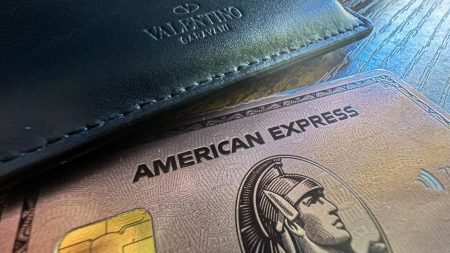Key takeaways
- The minimum age to get a credit card is 18 years old.
- Card applicants under 21 years old need cosigners or proof of income to show issuers they can repay their balances.
- If you’re between ages 18 and 21, you could apply for a secured credit card or student credit card — or become an authorized user on someone else’s account.
- Using your first credit card responsibly can help build your credit history and establish a good credit score.
Building a credit history is one of the most important tasks in a young person’s life — and the sooner you begin, the better. While it is possible to become a primary cardholder before the age of 21, getting a credit card at a younger age requires a little extra work.
If you’re new to credit, here’s what to know before applying for a credit card, including at what age you can get a credit card.
How old do you have to be to get a credit card?
Cardholders must be at least 18 years old, the age when you are typically allowed to enter legal contracts. But if you’re under 21, the 2009 Credit CARD Act requires you to have a cosigner or show proof, such as a consistent income source, that you can independently repay your card debt.
How to get a credit card at 18
If you’re between 18 and 21 but can’t qualify for a traditional unsecured credit card, you could try applying for a secured credit card. Secured credit cards cater to people with no credit or bad credit by requiring an upfront deposit that typically equals the credit limit. So if you put down a $200 security deposit, your line of credit will likely equal $200.
Showing responsible credit card use, such as making on-time, in-full payments, will help you establish a positive credit history. It can also lead to your issuer refunding your deposit after a certain amount of time, usually a few months. Eventually, you may be able to upgrade your secured card to an unsecured card — either automatically or by talking to your issuer.
If you’re still in school, consider a student credit card. You will still need proof of income if you’re under 21, in addition to proof of enrollment. But student credit cards often have fewer credit requirements and higher approval rates for those with a thin credit history or limited income. They can even offer rewards designed for students, such as cash back bonuses for spending categories like dining, rideshares and grocery store purchases.
How to access a credit card before you’re 18
If you’re under 18, you can become an authorized user on someone else’s credit card account. Authorized users receive their own credit card that’s linked to the account of the primary cardholder. Though your name is on the card, the primary cardholder is responsible for paying the balance.
If the card issuer reports authorized users’ card activity to the credit bureaus, your credit score could benefit from the primary cardholder’s responsible use of the card. But missed payments or a high credit utilization on the card could also hurt your score.
Credit card options and requirements by age
| Cardholder age | Options available to access credit |
|---|---|
| Under 18 years old |
|
| 18 to 20 years old |
|
| 21 year old and up |
|
Signs that you’re ready for a credit card
If you’re over 18 and considering applying for a credit card, here are a few signs you might be ready to use it responsibly:
- You earn enough income. If you have a steady job or other source of income that will allow you to pay off your credit card balance each month, that can help show card issuers you’re ready for a credit card.
- You pay your bills on time. You might already have bills to pay, like rent, utilities or a phone bill. Making those payments on time is a sign you could also manage on-time credit card payments.
- You have a budget. Building a budget that tracks your expenses, debt repayment and savings goals can help you be prepared to spend responsibly with a card.
- You understand how interest works. Knowing how credit card interest is calculated is crucial in case you ever carry a balance. Interest adds up fast, so be prepared to stay ahead of your balance and pay it off before it gets out of control.
- You’ve done your research when it comes to credit card basics. Knowing the difference between your statement balance, current balance and your minimum payment due, as well as other common credit card terms, can help you out quite a bit when you have to read your first credit card statement.
How to start building credit
After you’re approved for a credit card, you can start using it responsibly to build credit. It helps to know the factors that are considered in your credit score, which include:
- Payment history, including on-time payments
- Credit utilization ratio, or how much available credit you’re using
- Credit age
- Credit mix, or different types of credit
- Any new credit or credit inquiries
Even though a new credit card might feel like you have newfound spending money, it’s best to still spend within your means and pay off what you owe — ideally in full each month. Experts also recommend keeping your credit utilization ratio — or how much of your available credit you’re using — under 30 percent. So if your first credit card has a limit of $500, make sure your balance doesn’t go above $150.
To set yourself up for success, start with one card and wait at least six months before applying for another. Building a good credit score can help you access cards with better rewards, lower rates and lucrative welcome bonuses in the future.
The bottom line
The credit card age requirement is 18. However, card applicants under 21 must apply with a cosigner or show proof of income.
Even with the additional requirements, turning 18 opens the door to new financial opportunities that may help you build a strong credit score. Whether you plan to apply for a starter credit card, pay a deposit for a secured card or ask to become an authorized user on someone else’s account, you can start building your credit history and enjoy some of the perks that credit cards can offer. Just remember to use your card responsibly to avoid harming your credit score or ending up in debt.
Read the full article here
















